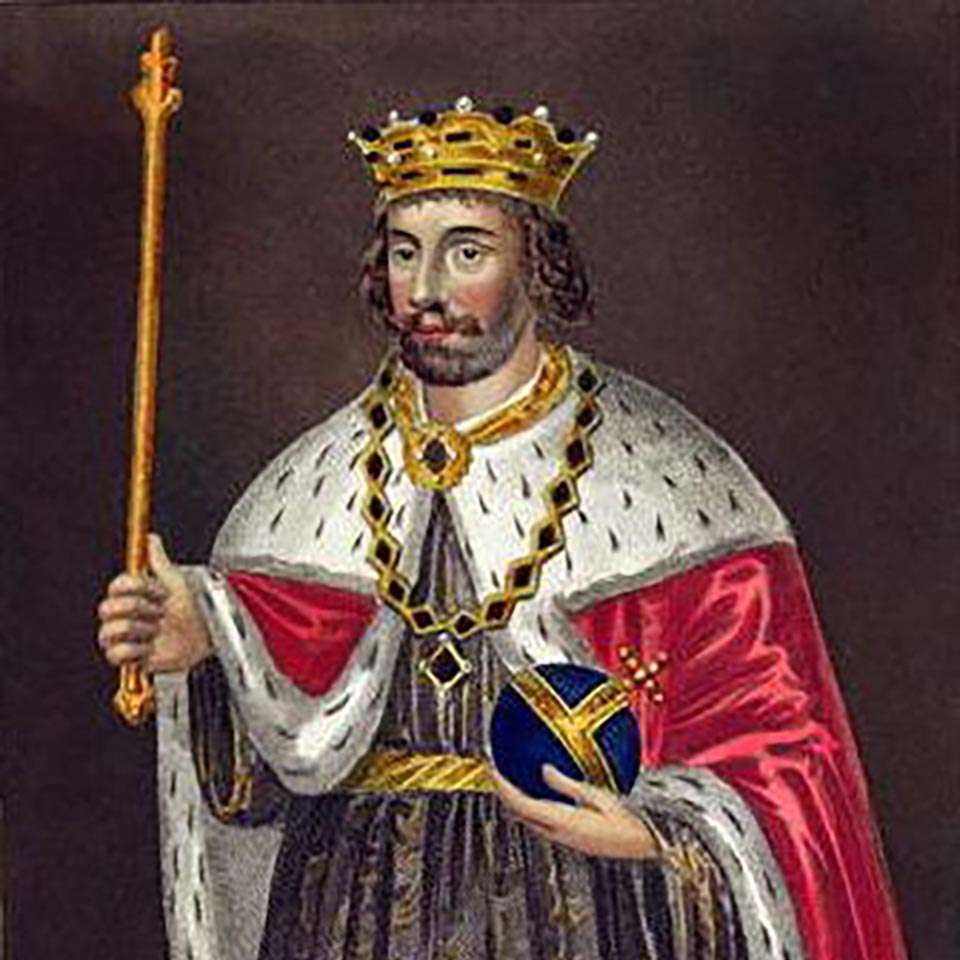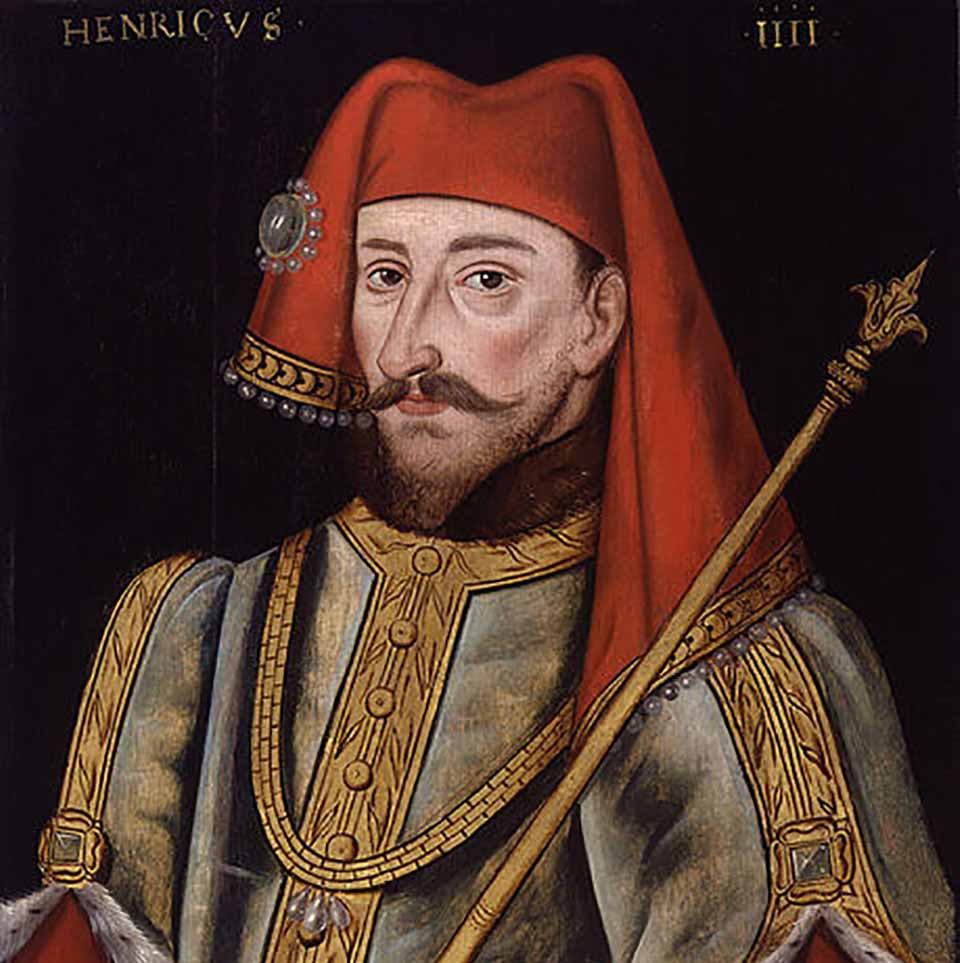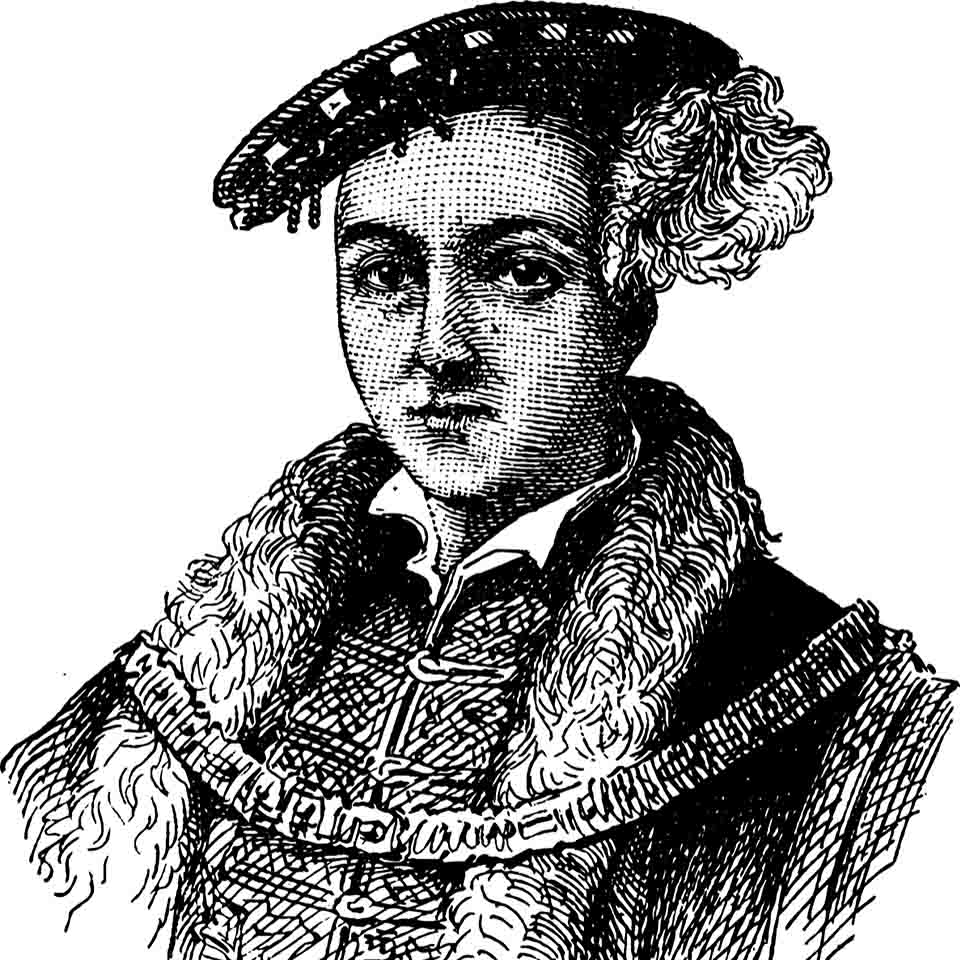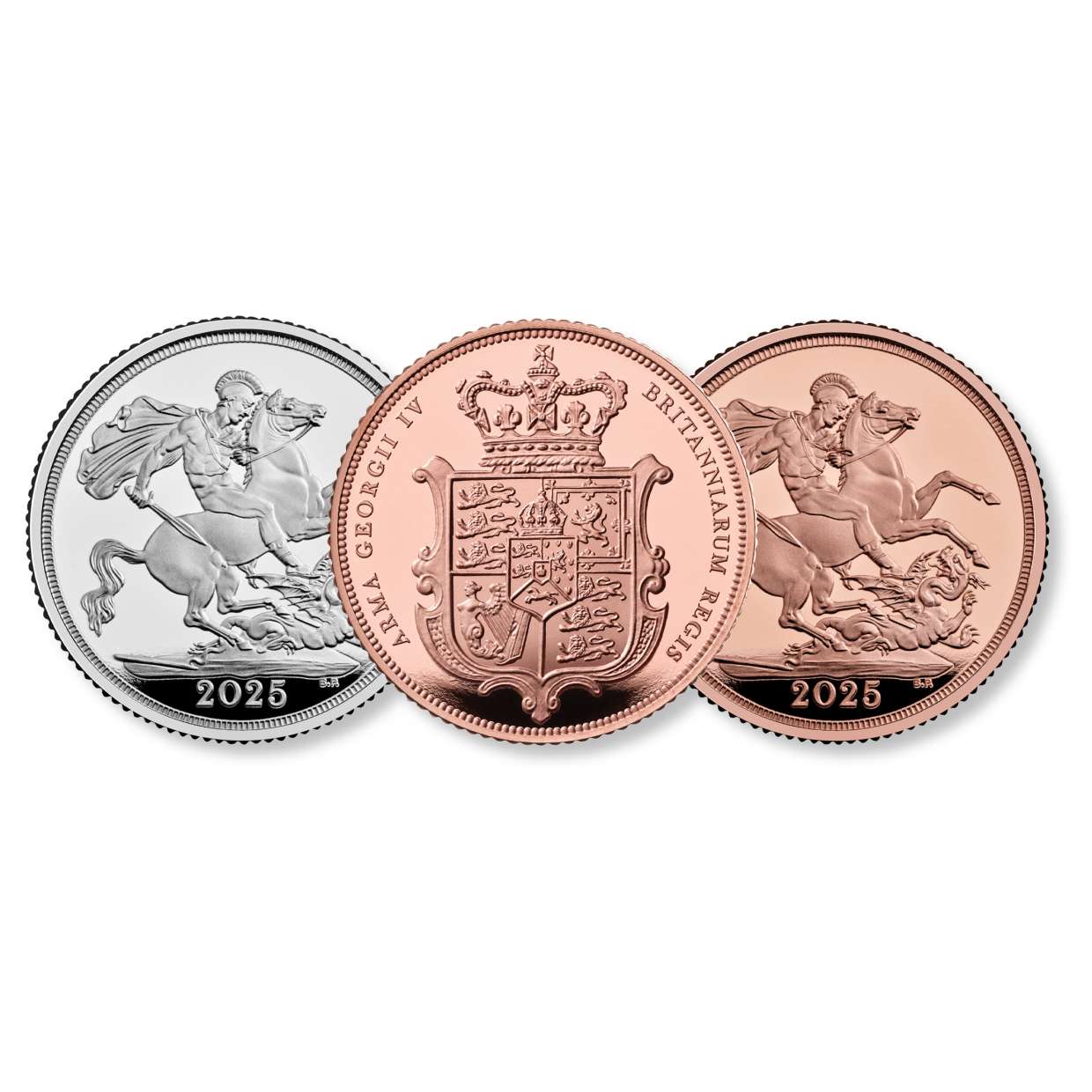King Edward II (1307 - 1327)
Synopsis
Edward II, the son of Edward I and his wife, Eleanor of Castile, was born in 1284. He became heir apparent aged only a few months when his elder brother Alphonso died at the age of 11. Edward II's reign as King was largely ineffectual and faced enormous opposition from the English barons. He was eventually deposed and murdered in favour of his son by his own wife, Isabella and her lover, Roger Mortimer.

Early Life
Prince Edward was the first heir to the English throne to be made Prince of Wales, and having been born at Caernarvon Castle, was in fact Welsh by birth, if not by blood. Sadly for the Welsh, he was apparently not raised to speak welsh, in spite of a request from the conquered Celts that their prince should be a native speaker of their language. He apparently spoke no English either, if Edward I kept his promise that their new Prince would 'speak no English at all'. This may have been true, as the first language of the English court and nobility at this time was still Norman French.
Edward lost his mother at the age of five, however, he is said to have doted on his stepmother, whom his father married 10 years later when Edward was 15. His father, a renowned warrior king and skilled politician, tried to school his heir in the arts of war and politics, but they apparently made little impression on the young prince, who preferred handicrafts and boating to fighting and statecraft, much to the frustration of his father, who eventually had his son's favourite and lover Piers Gaveston expelled shortly before his death in 1307.
The War with Scotland
Edward II inherited a war of conquest that had been initiated by his father to subdue the Scots as he had done the Welsh. However, Edward II was not the man his father was. His father had been on the verge of conquering Scotland at the time of his death, but the new King tried to abandon his father's war against the Scots, however, this allowed them a breathing space that they exploited to gather strength and then gradually seize back territory held by English magnates. Edward II's disastrous handling of the Scottish war saw the English gradually losing hard-won territory, eventually culminating in the shattering defeat of English forces led by Edward II at the Battle of Bannockburn in 1314, in which he barely managed to escape with his life.
Even in the hands of a barely competent general, the Battle of Bannockburn should have been a crushing victory for the English, whose army was twice the size of that of the Scots and had the advantage of containing thousands of English and Welsh Longbowman, who were probably the most devastatingly effective foot soldiers of the era. Edward II's failure at Bannockburn laid bare his weakness in what was regarded in the Middle Ages as one of the most important assets as a King, the ability to wage war. However, this was not the only reason for the rise in discontent that would eventually lead to his downfall.
Rebellion at Home…. and in the Home
One of Edward II's first acts as king was to recall his favourite Piers Gaveston from exile, despite his father's explicit dying wish that he was not to be recalled. Gaveston was created Earl of Cornwall by Edward, a controversial decision amongst the nobility due to his relatively humble birth (this title was traditionally reserved for members of the Royal Family). In addition, Edward left Gaveston in charge as his regent when he left for France in order to marry Isabella of France in 1308. Upon Edward's return from France with his new bride, he immediately alienated her by making it outrageously apparent that he preferred the company of Gaveston to her. Barons hostile to the King conspired to express their opposition and to demand the exile of Piers Gaveston. They were supported in this by the King of France, who was unhappy with his daughter's treatment at the hands of Edward II. Faced with the opposition of both the Barons and the French king, Edward II felt he had no other choice but to consent to the exile of his favourite.
Gaveston returned from exile following concessions Edward II made in order to curry favour with his opponents, however, Gaveston soon alienated the barons again with his behaviour and he was exiled once more under threat of excommunication. Despite this, he returned once again in 1312. Soon after, he was captured by the Earl of Warwick, one of the disaffected barons, and put to death. The King was enraged, and swore vengeance, but could not immediately take revenge.
The Despensers
The murder of Gaveston did not have the effect the nobles desired, as Edward II simply replaced his favourite first with Roger D'Amoury and then with Hugh Despenser the Younger, whose father, Hugh Despenser the Elder, who also enjoyed the favour, if not the bed of Edward II. The Despensers were not an improvement over Gaveston in the eyes of the nobility, and their influence was in fact, one of the main reasons for the final alienation of Queen Isabella, who had at least been able to do business with Gaveston. The young Despenser's arrogance and greed virtually had no limits. He used his power over the King to virtually run the country and abused this power to his own advantage. He seized the castles and properties of his brother-in-laws as the inheritance of his wife (in violation of medieval custom), murdered a welsh hostage, the chivalrous (by medieval standards) Llewellyn Bren in 1318 which had the unusual effect of uniting the native Welsh and the English Marcher Lords in common cause. He also threatened to kill Roger Mortimer, Isabella's future lover. The nobility finally forced Edward to send the Despenser's into exile in 1321, from which the younger Despenser became a notorious pirate preying on merchant ships, much to the chagrin of the merchant class.
Such was the disgust of the common people within the realm that even the peasantry rose up in revolt with their lord, Roger Mortimer against Edward and the Despensers in 1321, the uprising was soon crushed however, and Roger Mortimer fled into exile. Also in 1321, Thomas, Earl of Lancaster and the King's cousin, rose up in rebellion against the King and Despensor. They were however, defeated and captured following the victory of Royal Forces at the Battle of Boughbridge in 1322. Edward II was in no mood to grant mercy, as Lancaster had been present at the execution of Gaveston. Lancaster was subsequently executed after a kangaroo trial in which the two Despensers formed part of the tribunal that was to condemn him. Edward II's idea of justice was made to seem arbitrary and vengeful.
Isabella and Mortimer
Relations between Queen Isabella and her husband were already strained by his relationship with the Despensers, whom she had come to hate for their contemptuous and open disregard for her, despite her Royal status. She had further reason to despise her husband when he seemingly abandoned her after the Battle of Old Byland in 1322 as he rode south for reinforcements. As the Scots closed in, she had been forced to take shelter at Tynemouth priory, which the Scots encircled and from which she barely managed to escape by boat, but not before she had seen some of her personal retinue and two of her ladies-in-waiting killed by the advancing Scots. Isabella blamed her husband and the Despensers for this fiasco, and decided to tour England by herself to get herself away from her husband and his favourites. In 1323, in a scarcely believable act of arrogance by the Despensers, they tried to force the Queen to make an oath of loyalty to them, which she refused, following which, the Despensers confiscated her lands and her youngest children.
By 1325, Isabella had had enough. Taking advantage of an opportunity to return to France on a diplomatic mission, Isabella fled to the French court of her brother, where she negotiated a treaty whereby her son, the Prince of Wales would pay homage to the King of France for Edward II's French possessions. He arrived the following year. With the Prince of Wales in her possession, she refused to return to England whilst the Despensers remained in power. Having taken up with Roger Mortimer, the couple plotted a return to England to depose Edward and the Despensers.
In 1326, Isabella and Mortimer, with the connivance of the French, landed with a small force in England. In response, Edward II mobilised local militia forces to confront their growing army. Unfortunately for Edward and the Despensers, they were by now so unpopular that the militia forces deserted to the Queen. The King fled London, but the Despensers were soon captured. Isabella and Mortimer exacted a brutal revenge upon the Despensers. Having had them both tried and convicted of treason, the elder Hugh Despenser was hanged and then beheaded. The younger Despenser was not however, fortunate enough to experience this comparatively gentle fate. He suffered a gruesome, slow and painful execution, even by medieval standards. He was first hanged, but cut down alive and conscious. He was then castrated, disembowelled (and his entrails thrown onto a fire in front of his still-living eyes) and only then was he finished off by having his chest cut open and his heart ripped out. His brutalised, mutilated corpse was then beheaded and chopped into quarters for dispersal to all four corners of the Kingdom. All of this took place in front of jeering crowds whilst Isabella and Mortimer looked on from a balcony, feasting on a magnificent banquet prepared for the occasion; such was their almost limitless hatred for the King's lover.
Abdication and Death of Edward II
Meanwhile, Edward II had been captured and imprisoned at Kenilworth Castle. In January 1327, the King was compelled, under duress, to abdicate in favour of his son. This did not however, solve the problem for Isabella and Mortimer, as it was widely believed, even amongst some of Edward II's opponents that no matter how bad a king was, he was divinely ordained, and could not truly be removed from the throne except by death. Mortimer and Isabella's enemies had the potential therefore, to use the deposed king as a rallying point against them. Edward II was later removed to Berkley, were a few months later he was murdered, allegedly by having a red hot spit inserted into his rectum. A vicious form of revenge intended by Isabella as an expression of her resentment at the King's physical affection towards his male favourites (and also to hide any indication that he had been might have been murdered). In spite of this, it came to be widely believed that he had in fact been murdered in an act of gross sacrilege against a king appointed by God. A cult came to be built around him, in spite of the widespread resentment and antipathy he had inspired when alive. His son Edward III later came to regret the role he had played in his father's deposition and murder, and would later build a magnificent tomb for him, and attempted to have him canonised.
Legacy
Edward II is widely (and probably accurately) seen as a terrible king, whose incompetence and tolerance for corrupt favourites led to all but the complete ruination of England. He was a man who was not temperamentally suited to occupy the throne, and was probably more suited to the life of a minor aristocrat with time to spend on his personal hobbies than taking part in important matters of state. In that respect, he might be seen as a tragic figure.
Numismatically, Edward II's coins are unfortunately difficult to distinguish from those of his father, and can only be done so by comparing die varieties using reference material such as North's Hammered English Coinage Volume II.
A history of Kings and Queens of England - Learn more about the Kings and Queens that reigned England throughout the different monarch dynasties (1066-2022).
Related Blog Articles
This guide and its content is copyright of Chard (1964) Ltd - © Chard (1964) Ltd 2024. All rights reserved. Any redistribution or reproduction of part or all of the contents in any form is prohibited.
We are not financial advisers and we would always recommend that you consult with one prior to making any investment decision.
You can read more about copyright or our advice disclaimer on these links.




















